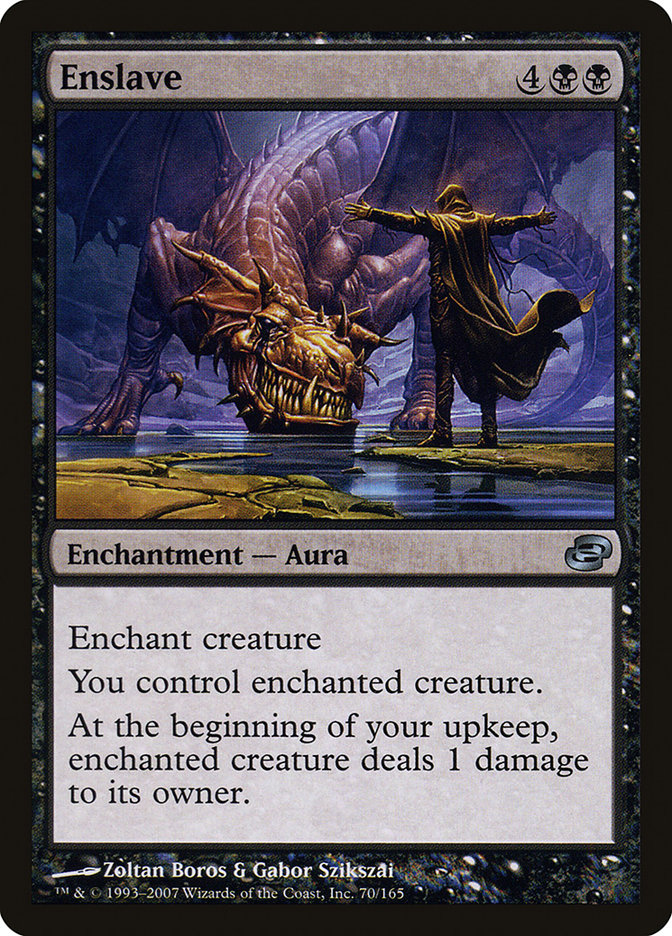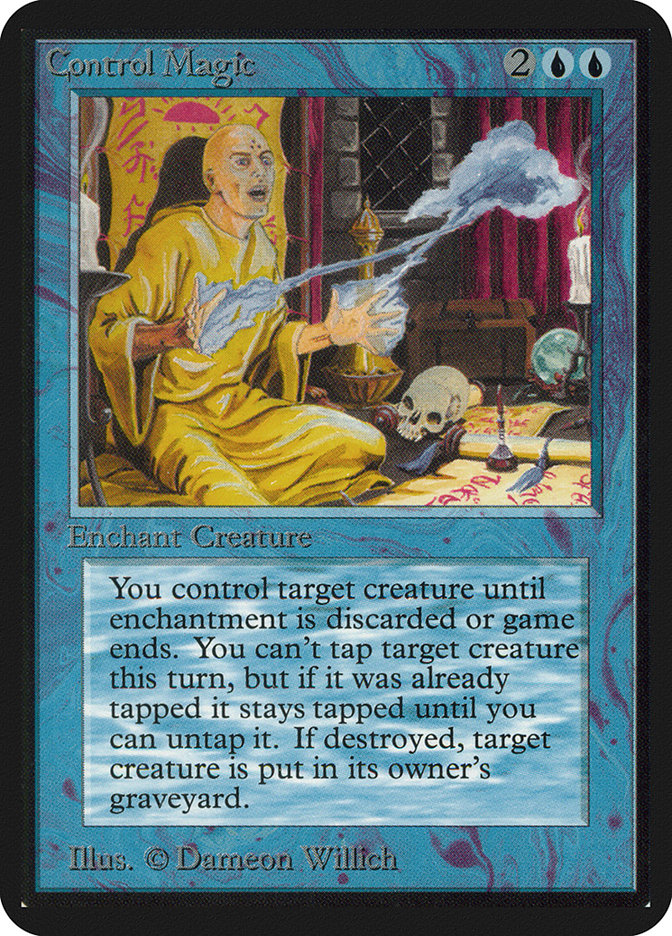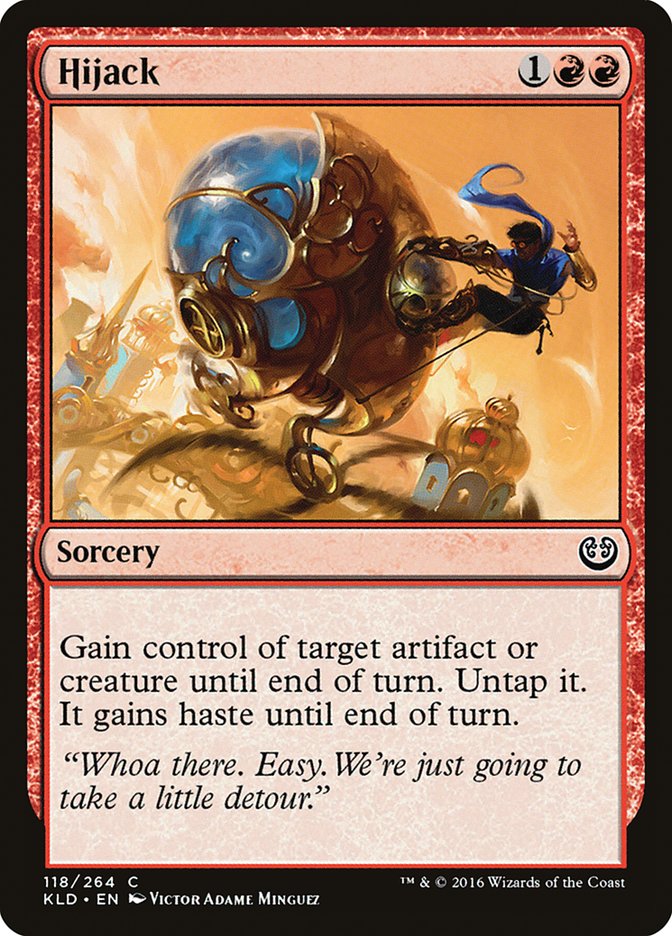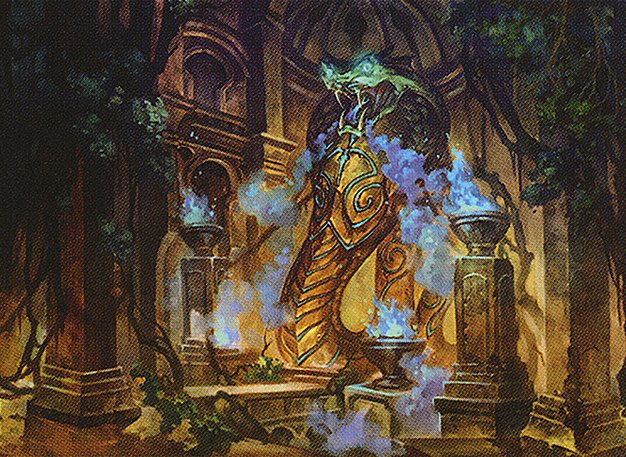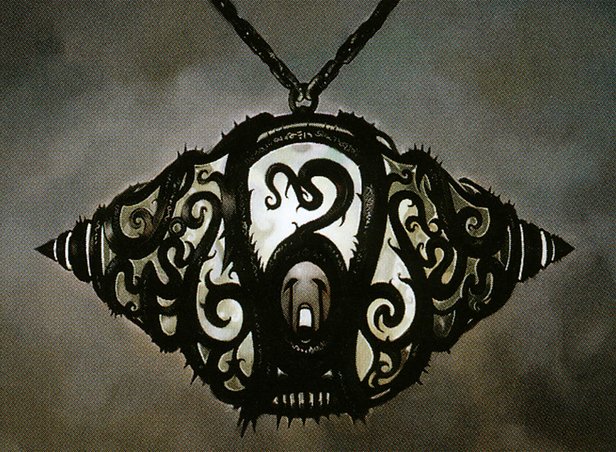Enslave MTG Card
| Card sets | Released in 4 setsSee all |
| Mana cost | |
| Converted mana cost | 6 |
| Rarity | Uncommon |
| Type | Enchantment — Aura |
| Abilities | Enchant |
Key Takeaways
- Enslave can shift board dynamics by converting foes into assets, offering a decisive strategic advantage.
- Its downsides, like high mana cost and discard requirement, may hinder seamless deck integration.
- Despite alternatives, Enslave’s unique blend of control and damage makes it a potential game-changer.
Text of card
Enchant creature You control enchanted creature. At the beginning of your upkeep, enchanted creature deals 1 damage to its owner.
Card Pros
Card Advantage: Enslave takes control of an opponent’s creature, effectively swinging the balance of the board in your favor. Not only do you diminish your opponent’s assets, but you also gain a new one, offering a significant shift in card advantage.
Resource Acceleration: This card can serve as a form of resource acceleration by negating the need to spend your own resources to summon a creature. Instead, you’re appropriating an opponent’s investment, conserving your mana and cards for other strategic plays.
Instant Speed: While Enslave itself is not an instant, the ability to disrupt your opponent’s strategy at the beginning of your upkeep can have an impact similar to instant speed interactions. Taking control of a key creature right before your turn leaves the opponent with less time to react and recover, akin to the surprise element of instant speed plays.
Card Cons
Discard Requirement: The deck manipulation brought on by Enslave comes with a steep price. It necessitates the player to discard a card, which can be detrimental when in-game options are already dwindling. This can put you at a further disadvantage, especially when every card in hand is vital for your strategy.
Specific Mana Cost: Enslave’s efficacy is tightly bound to its mana requirements, demanding a specific combination of mana types to cast. This could potentially restrict its incorporation only into decks fashioned around those particular colors, potentially sidelining a vast array of other deck-building options.
Comparatively High Mana Cost: With its mana cost leaning on the higher side, Enslave might not be the most economical choice for control. Other options are available in the game that can provide control or removal effects at a more manageable mana expenditure, making them more appealing in terms of gameplay and strategy optimization.
Reasons to Include Enslave in Your Collection
Versatility: Enslave is a powerful removal option that doubles as a control mechanism. It can fit into various decks, particularly those looking to command the battlefield by taking control of key creatures from opponents.
Combo Potential: The ability to steal opponents’ threats not only disrupts their game plan but also provides a creature that you can potentially combo with your own card synergies, making it a dangerous and unexpected addition to your arsenal.
Meta-Relevance: Given its nature to turn the tide by shifting the balance of power, Enslave can be extremely potent in metas with plenty of formidable creatures. In such environments, having a card that can effectively remove a threat and then use that threat against your opponent is invaluable.
How to beat
Understanding the strengths and weaknesses of Enslave is crucial for any MTG player looking to maintain control over the battlefield. This powerful aura card takes command of an opponent’s creature, effectively turning the tide in your favor. As a game-changing enchantment, Enslave also deals one damage to the former creature owner during your upkeep, which can gradually chip away at their life total.
To counter Enslave, consider including instant-speed removal or enchantment destruction in your deck. Cards such as Naturalize or Disenchant can effortlessly remove Enslave from the creature, liberating it from your opponent’s control. Additionally, having hexproof or shroud abilities on your creatures prevents them from becoming targets in the first place. By playing strategically and having the right counters in place, Enslave’s potential impact can be mitigated or even turned into a disadvantage for the player who cast it.
Tactically responding to threats like Enslave not only preserves your board presence but also conserves the resources you’d otherwise lose. Gear your sideboard with these answers, and you’ll find yourself one step ahead in the delicate power struggle that defines every MTG match.
Cards like Enslave
When examining Enslave as a control tool in Magic: The Gathering, it’s worth comparing it to cards with similar enslaving or hijacking effects. Take Control Magic, for example. This blue counterpart also allows you to seize command of an opponent’s creature. While Enslave has the additional benefit of dealing damage to the former owner, Control Magic offers the same controlling power at a lower mana cost without the life loss advantage.
Another card that echoes Enslave’s effect is Mind Control. This card also takes over an enemy’s creature, but trades the extra damage for a simpler mana cost breakdown. Hijack represents a temporary version of this effect, granting control of any artifact or creature until end of turn, which can be crucial during pivotal turns.
In essence, Enslave offers a unique blend of damage-dealing with creature control, positioning itself as a potent choice for late game scenarios. Its power lies in gradually weakening the opponent while benefiting from their commandeered creature’s presence on the battlefield.
Where to buy
If you're looking to purchase Enslave MTG card by a specific set like Planar Chaos and New Phyrexia, there are several reliable options to consider. One of the primary sources is your local game store, where you can often find booster packs, individual cards, and preconstructed decks from current and some past sets. They often offer the added benefit of a community where you can trade with other players.
For a broader inventory, particularly of older sets, online marketplaces like TCGPlayer, Card Kingdom and Card Market offer extensive selections and allow you to search for cards from specific sets. Larger e-commerce platforms like eBay and Amazon also have listings from various sellers, which can be a good place to look for sealed product and rare finds.
Additionally, Magic’s official site often has a store locator and retailer lists for finding Wizards of the Coast licensed products. Remember to check for authenticity and the condition of the cards when purchasing, especially from individual sellers on larger marketplaces.
Below is a list of some store websites where you can buy the Enslave and other MTG cards:
- eBay
- TCG Player
- Card Kingdom
- Card Market
- Star City Games
- CoolStuffInc
- MTG Mint Card
- Hareruya
- Troll and Toad
- ABU Games
- Card Hoarder Magic Online
- MTGO Traders Magic Online
See MTG Products
Printings
The Enslave Magic the Gathering card was released in 4 different sets between 2007-02-02 and 2021-03-19. Illustrated by 5 different artists.
| # | Released | Name | Code | Symbol | Number | Frame | Layout | Border | Artist |
|---|---|---|---|---|---|---|---|---|---|
| 1 | 2007-02-02 | Planar Chaos | PLC | 70 | 2003 | Normal | Black | Zoltan Boros & Gabor Szikszai | |
| 2 | 2011-05-13 | New Phyrexia | NPH | 58 | 2003 | Normal | Black | Chris Rahn | |
| 3 | 2014-12-05 | Duel Decks Anthology: Garruk vs. Liliana | GVL | 58 | 2015 | Normal | Black | Zoltan Boros & Gabor Szikszai | |
| 4 | 2021-03-19 | Time Spiral Remastered | TSR | 113 | 2015 | Normal | Black | Zoltan Boros & Gabor Szikszai |
Legalities
Magic the Gathering formats where Enslave has restrictions
| Format | Legality |
|---|---|
| Commander | Legal |
| Legacy | Legal |
| Modern | Legal |
| Oathbreaker | Legal |
| Vintage | Legal |
| Duel | Legal |
| Predh | Legal |
Rules and information
The reference guide for Magic: The Gathering Enslave card rulings provides official rulings, any errata issued, as well as a record of all the functional modifications that have occurred.
| Date | Text |
|---|---|
| 2021-03-19 | A token’s owner is the player who created it. |
| 2021-03-19 | Gaining control of a permanent doesn’t cause you to gain control of any Auras or Equipment attached to it. They’ll remain attached, but their abilities that refer to “you” still refer to its controller rather than you. The controller of such an Equipment can activate its equip ability to move it back to one of their creatures during their main phase. |
| 2021-03-19 | The owner of a card is the player who started the game with that card in their deck. If the card didn’t start the game in a deck, its owner is the player who brought the card into the game, via Living Wish or a similar effect. |
